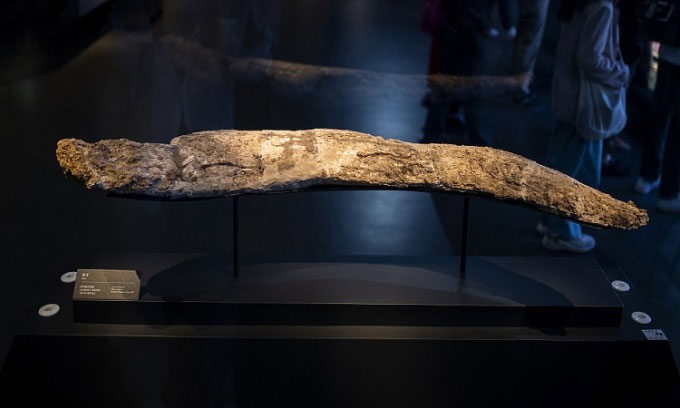Archaeologists working at the Tam Tinh Đôi site must use polymer materials to safely extract fragile valuable artifacts from the ground.

A nearly intact ivory tusk excavated from a sacrificial pit at Tam Tinh Đôi. (Photo: CFP)
Approximately 13,000 artifacts, including gold, jade, and ivory items, have been discovered from six sacrificial pits during a recent excavation at the Tam Tinh Đôi site, according to a June 13 announcement from the Sichuan Institute of Cultural Heritage and Archaeology. Located in Guanghan City, the Tam Tinh Đôi site reveals significant information about the ancient Shu kingdom (which existed 3,000 to 4,500 years ago). This site is regarded as one of the most important collections of artifacts from the 20th century.
During the latest excavation, archaeologists employed cutting-edge technologies throughout the exploration and digging process. Many modern materials and methods were utilized to extract and preserve the artifacts. The research team unearthed a large quantity of ivory from four pits (numbers 3, 4, 7, and 8) at the site. Microscopic observations also revealed more than 20 bronze and ivory objects with woven patterns on their surfaces. Experts noted that many ivory artifacts remain intact but are extremely fragile after being buried for thousands of years, making collection and restoration challenging.
Zhao Hao, an archaeologist working at the sacrificial pit at the Tam Tinh Đôi site, shared that he and his colleagues used various high-tech methods to restore the different types of artifacts excavated here. “During the excavation, we primarily used ultra-light polymer materials to quickly and easily extract ivory items from the ground and then remove the dust clinging to their surfaces. With this long-term protective agent, the ivory objects can be better preserved at various temperatures or in cold and humid environments,” Zhao stated. To preserve DNA and various protein information in the artifacts, the ivory items were placed in a cold room while the bronze objects were stored in an environment with low oxygen levels and temperatures.
Located about 60 km from the capital city of Chengdu, the Tam Tinh Đôi site covers an area of 12 km2. In early 1986, archaeologists discovered thousands of valuable artifacts, including a gold scepter and a bronze tree. To date, researchers have excavated 50,000 items made of bronze, jade, gold, ceramics, and ivory from this site. In the future, they will continue to explore the ruins outside the sacrificial area and learn more about the ancient kingdom at Tam Tinh Đôi.


















































